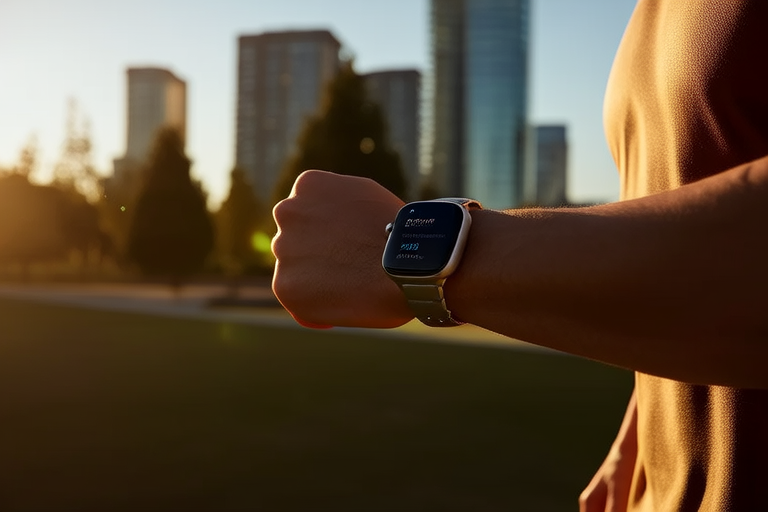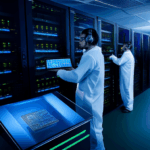“`html
How Wearable Devices Are Revolutionizing Personal Health Monitoring
Introduction
In recent years, wearable devices have gained immense popularity, becoming indispensable tools for individuals seeking to monitor and manage their health. These gadgets, ranging from simple pedometers to advanced smartwatches and fitness trackers, offer a range of functionalities that cater to diverse health needs. As the global population becomes increasingly health-conscious, the demand for personal health monitoring has surged. Wearable devices not only help users track their physical activities but also provide real-time data on various health metrics, enabling them to make informed decisions about their wellbeing.
The significance of personal health monitoring cannot be overstated in today’s fast-paced world. With the rise of chronic diseases and sedentary lifestyles, there is a growing need for tools that can facilitate proactive health management. Wearable devices are transforming the landscape by offering continuous, non-invasive monitoring of vital signs and activity levels. This shift towards self-care and preventive healthcare is pivotal in addressing the challenges posed by modern living.
This article delves into the evolution of wearable technology, the types of devices available, their benefits, integration with healthcare systems, and the challenges and future prospects of this rapidly advancing field. By understanding these aspects, readers will gain valuable insights into how wearable devices are revolutionizing personal health monitoring.
Evolution of Wearable Technology
The journey of wearable technology began with simple pedometers that tracked steps taken during the day. Over time, these devices evolved into more sophisticated gadgets capable of monitoring a wider array of health metrics. Key innovations, such as the introduction of accelerometers and GPS chips, have significantly enhanced the capabilities of wearable devices. Today, smartwatches and fitness bands not only count steps but also measure heart rate, blood oxygen levels, and even sleep quality.
The development of wireless connectivity and cloud-based platforms has further propelled the advancement of wearable technology. Users can now sync their devices with smartphones or computers, allowing for easy access to detailed health reports. Additionally, the integration of artificial intelligence and machine learning algorithms enables these devices to provide personalized insights and recommendations based on individual data. The increasing sophistication and user-friendliness of wearable devices have contributed to their widespread adoption, making them essential tools for health enthusiasts and professionals alike.
Types of Wearable Devices
Wearable devices come in various forms, each designed to cater to specific health needs. Smartwatches, such as the Apple Watch and Samsung Galaxy Watch, are versatile gadgets that combine timekeeping with advanced health monitoring features. Fitness bands like Fitbit and Garmin offer a more streamlined approach, focusing primarily on tracking physical activity and fitness goals. Heart rate monitors, such as those produced by Polar and Suunto, provide precise measurements of heart rate variability, while ECG sensors, found in devices like the Apple Watch Series 4 and 5, enable users to monitor their cardiac health.
Sleep trackers, such as the Oura Ring and ResMed S+ Sleep System, analyze sleep patterns and provide insights into the quality and duration of sleep. These devices can detect disruptions in sleep cycles and suggest ways to improve sleep hygiene. Other types of wearable devices include continuous glucose monitors (CGMs) for diabetic patients, and smart clothing that tracks biometric data through embedded sensors. Each device offers unique advantages, making it easier for users to monitor specific health metrics and take proactive measures to maintain their wellbeing.
Benefits of Wearable Devices for Personal Health Monitoring
One of the primary benefits of wearable devices is their ability to provide real-time data on vital signs and activity levels. This continuous monitoring allows users to stay informed about their health status at all times. For instance, heart rate monitors can alert users when their heart rate exceeds safe limits, prompting them to take necessary actions. Similarly, sleep trackers can help users identify patterns that may be affecting their sleep quality, enabling them to make adjustments to their routines.
Moreover, wearable devices empower users to make informed decisions about their health. By analyzing trends over time, users can gain valuable insights into their lifestyle habits and their impact on overall wellbeing. This data-driven approach fosters a sense of accountability and motivation, encouraging users to adopt healthier behaviors. Additionally, wearable devices play a crucial role in preventive healthcare by enabling early detection of potential health issues. For example, irregularities in heart rate or blood pressure can be flagged, prompting users to seek medical attention before symptoms worsen.
Personalized treatment plans are another significant benefit of wearable devices. Healthcare providers can leverage the data collected by these devices to tailor interventions that address individual needs. This targeted approach enhances the effectiveness of treatments and improves patient outcomes. Overall, wearable devices are instrumental in promoting proactive health management, helping users take control of their wellbeing and leading healthier lives.
Integration with Healthcare Systems
The integration of wearable devices into healthcare systems is paving the way for seamless data sharing between patients and healthcare providers. Telemedicine and remote patient monitoring are emerging as powerful tools that leverage the capabilities of these devices. By transmitting real-time health data to healthcare professionals, patients can receive timely advice and intervention, even from the comfort of their homes. This approach not only improves accessibility but also reduces the burden on healthcare facilities, allowing for more efficient allocation of resources.
However, the integration of wearable devices into healthcare systems also raises important regulatory and privacy concerns. Ensuring the security and confidentiality of sensitive health information is paramount. Regulatory bodies must establish robust frameworks to safeguard patient data and prevent unauthorized access. Privacy policies should be transparent and easily understandable, giving users full control over their personal information. Addressing these concerns is crucial to building trust and fostering widespread adoption of wearable devices in healthcare settings.
Challenges and Future Prospects
Despite their many advantages, wearable devices face several challenges that could hinder their widespread adoption. Accuracy is a key concern, as variations in readings can lead to incorrect conclusions about health status. Battery life is another issue, with longer usage often necessitating frequent recharging. Cost remains a barrier for many users, particularly those who may not see immediate benefits from investing in high-tech devices. Addressing these challenges requires ongoing innovation and improvement in device design and functionality.
The future of wearable technology holds great promise, with advancements expected in areas such as biometric sensors, AI-driven analytics, and improved battery efficiency. New features, such as continuous glucose monitoring and advanced sleep analysis, will further enhance the capabilities of these devices. Improvements in design and functionality will make them more comfortable and convenient to wear, ensuring broader appeal. As wearable devices continue to evolve, they will play an increasingly significant role in personal health monitoring, contributing to better public health outcomes.
Conclusion
In summary, wearable devices have revolutionized personal health monitoring by offering real-time data on vital signs and activity levels. Their ability to provide continuous, non-invasive monitoring empowers users to make informed decisions about their health and take proactive measures to maintain their wellbeing. The integration of these devices into healthcare systems is enhancing the delivery of care, facilitating telemedicine and remote patient monitoring. While challenges remain, ongoing advancements in technology promise to overcome these hurdles and further enhance the capabilities of wearable devices.
The transformative role of wearable devices in personal health monitoring is undeniable. As these gadgets continue to evolve, they will play an increasingly critical role in shaping the future of healthcare. By fostering a culture of proactive health management, wearable devices are helping individuals take control of their wellbeing and leading healthier lives. The future of wearable technology in healthcare is bright, and its impact on personal health monitoring is set to grow exponentially.
“`


